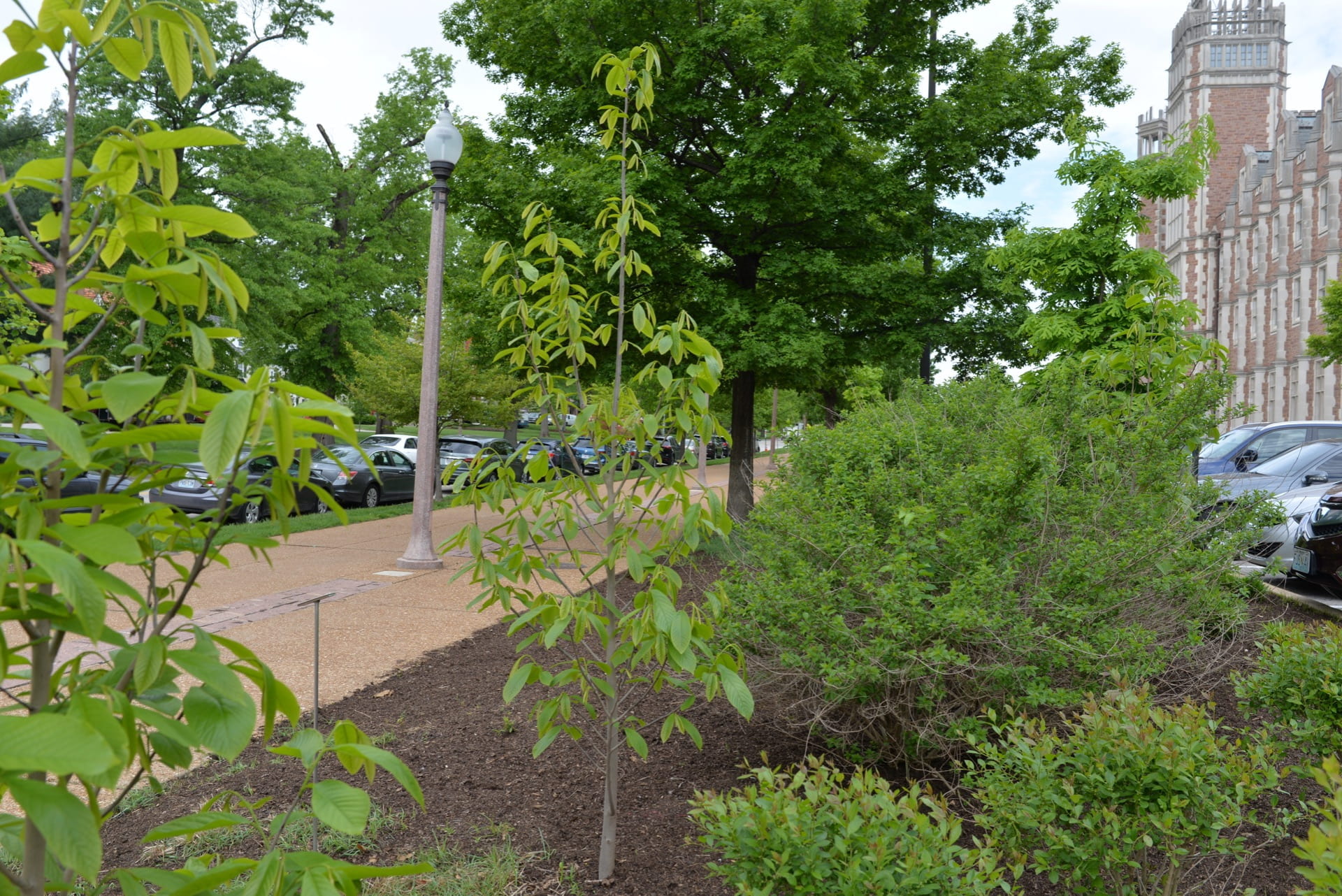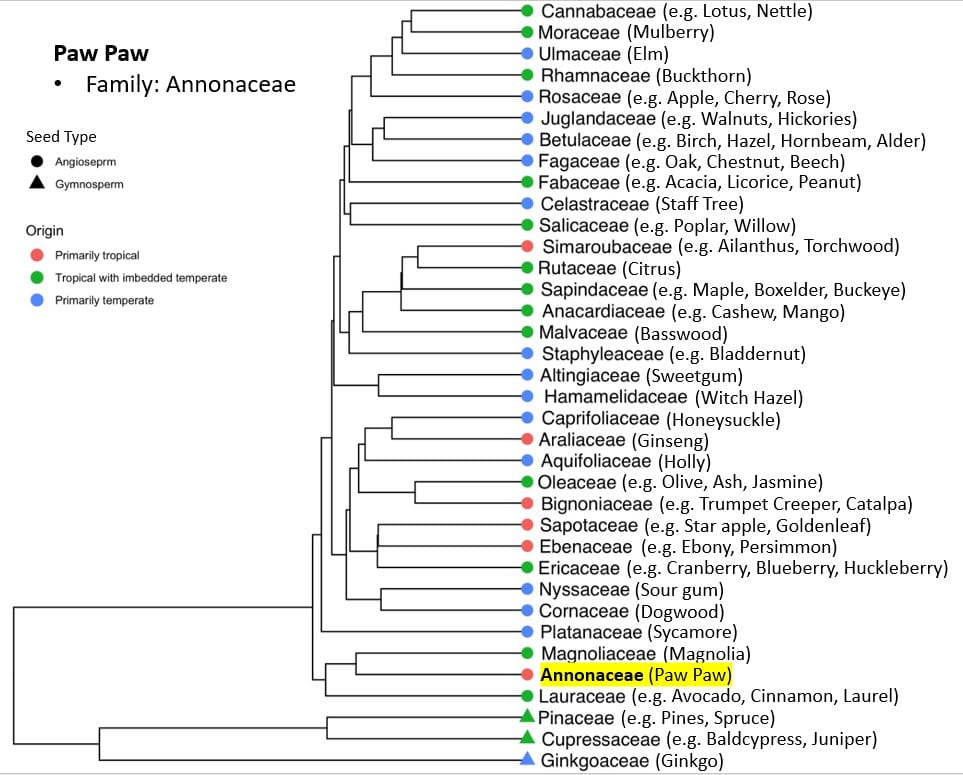Pawpaw
Arbor walk #50, TreeKeeper ID #1801

The Pawpaw, a Missouri native, features dark purple flowers in the spring, elongated edible fruit in the summer, and a yellow to yellow-green fall color which all add to the appeal of this small understory tree. With the exception of the Gourd, the fruit of the Pawpaw is the largest edible fruit indigenous to the United States. It has a sweet, custard-like flavor somewhat similar to that of banana, mango, and pineapple, and is commonly eaten raw. They are also used to make Pawpaw-flavored ice creams and baked desserts, of which George Washington was reportedly a devoted admirer. The lack of adapted herbivores to the fruit of the Pawpaw suggests to some scientists that the species may have evolved with a macrofaunal species that is now extinct but at one point digested the fruit and spread its seeds across the tree’s range.

GPS Coordinates
N/A
Percent Concrete
N/A
Distance to Buildings
| Year | Close Building #1 | Close Building #2 | Close Building #3 |
|---|---|---|---|
| 2020 | McDonnell Hall 30.75 m | Somers Family Hall, 38.29 m | Goldfarb Hall, 49.16 m |
Distance to Other Species
| Year | Close Species #1 | Close Species # 2 | Close Species # 3 |
|---|---|---|---|
| 2020 | Pawpaw, 2.34 m | Pawpaw, 2.92 m | White Oak, 5.7 m |
Standard Measurements
| Year | Height (m) | DBH (cm) | Caliper (m) | Crown Diameter N-S (m) | Crown Diameter E-W (m) | Average Crown Diameter (m) |
|---|---|---|---|---|---|---|
| 2020 | 3.2086 | 3.2 | N/A | 1.49 | 1.39 | 1.44 |
| 2023 | 5.35 | 8.9 | N/A | 3.51 | 2.55 | 3.03 |
Nests and Pests
| Year | Description |
|---|---|
| 2020 | No obvious indications of nests or pests on this tree |
Leaf Identification
The leaves of the Pawpaw are large, between 6″ and 12″. They are obovate-shaped, with a long acuminate (tapered) tip and an entire margin. The leaves are medium green and lighter green on the leaf underside. The leaves are arranged alternately on the stem. They have a strong scent when crushed.
Twig and Bud Identification
The twig turns from light green to brown with maturity, and develops irregular texture with age. The leaf buds are pointed, whereas the flower buds are rounded. Both are densely fuzzy with reddish-brown hairs. The terminal leaf bud is singular, and the flower buds are alternately arranged laterally.
Bark Identification
The bark is uniformly light gray, with warty growths across the bark.
Fruit Identification
The fruits of the Pawpaw are synonymous with the species; they are oblong berries, 3″-6″ in length, and pale green, turning yellow-brown and softening upon ripening in the early fall. Each fruit contains a few large seeds. The fruits are often known to be ripe once they drop from the tree. The inside flesh is edible, except the seeds.
Flower Identification
The flowers of the Pawpaw are bisexual (both stamens and pistils present in one flower), with 6 dark red-purple petals and three green sepals. The flowers are solitary on the peduncle (flowering stem), and have a cylindrical or bell-like shape.










